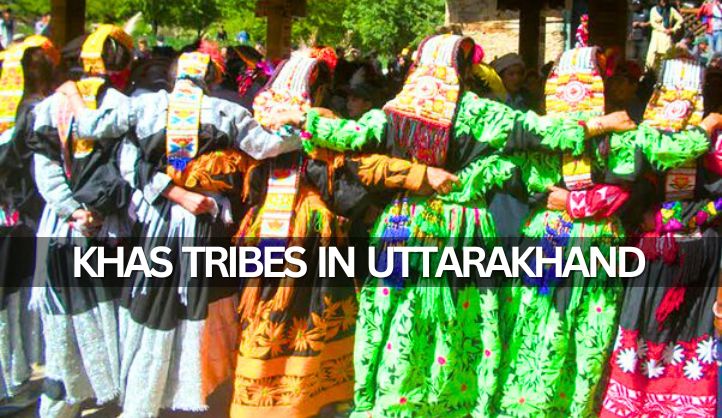Uttarakhand, with its diverse landscapes and rich cultural tapestry, is home to various indigenous communities that contribute to the region’s unique heritage. Among these communities are the Khas tribes, an ancient group with a profound impact on the cultural and social fabric of the state. In this blog, we explore the Khas tribes of Uttarakhand, their history, cultural practices, and contemporary significance.
Who Are the Khas Tribes?
The Khas tribes, primarily found in the northern and western regions of Uttarakhand, are one of the oldest and most significant communities in the state. They are often referred to as the “Khas” or “Khasas,” a term used historically to describe various groups in the region.
Historical Background
The Khas tribes have a rich historical background that dates back to ancient times. They are believed to have originated from the Himalayan region and have been instrumental in the region’s historical and cultural development. Historically, the Khas were known for their martial prowess and played a significant role in the formation of various dynasties and kingdoms in Uttarakhand.
Traditional Lifestyle and Occupations
1. Agriculture
The Khas tribes traditionally engage in agriculture as their primary occupation. They cultivate various crops such as wheat, barley, maize, and potatoes, adapting their agricultural practices to the mountainous terrain of Uttarakhand. Their farming techniques are well-suited to the region’s climate and topography.
2. Craftsmanship
Craftsmanship is another important aspect of the Khas lifestyle. They are known for their traditional weaving skills, creating intricate woolen textiles and garments that reflect their cultural heritage. Handmade items such as carpets, shawls, and garments are an integral part of their craft tradition.
3. Animal Husbandry
Animal husbandry, including the rearing of livestock like goats and sheep, is a significant part of the Khas economy. Livestock provides them with essential resources such as milk, wool, and meat, contributing to their sustenance and livelihood.
Cultural Practices and Traditions
1. Festivals and Celebrations
The Khas tribes celebrate various festivals and cultural events that reflect their deep connection to nature and spirituality. Festivals such as Holi, Diwali, and the regional festival of “Ghee Sankranti” are celebrated with traditional dances, songs, and rituals that reinforce their cultural identity.
2. Traditional Clothing
Traditional clothing of the Khas tribes is characterized by vibrant colors and intricate patterns. Men typically wear “kurta” and “churidars” or “dhoti,” while women adorn themselves in “saris” or “ghagras” with elaborate embroidery. The clothing often features patterns and designs unique to their community.
3. Religious Beliefs and Practices
The Khas tribes have a rich tapestry of religious beliefs that blend Hinduism with local traditions. They worship a variety of deities and spirits associated with nature, ancestors, and local folklore. Rituals and ceremonies are conducted to seek blessings and ensure harmony with the natural world.
Language and Literature
The Khas tribes speak various dialects, including Kumaoni and Garhwali, which are part of the Indo-Aryan language family. Their oral literature includes folk tales, songs, and poetry that reflect their historical experiences, cultural values, and relationship with nature. These oral traditions are passed down through generations and play a crucial role in preserving their cultural heritage.
Contemporary Challenges and Changes
In contemporary times, the Khas tribes face several challenges, including:
Modernization: The impact of modernization and urbanization has led to changes in traditional lifestyles and occupations. Many young Khas individuals are moving to cities for better opportunities, leading to a gradual shift away from traditional practices.
Environmental Issues: Environmental degradation and climate change have affected their traditional agricultural practices and natural resources.
Cultural Preservation: The rapid pace of cultural change poses a threat to the preservation of traditional customs and practices. Efforts are being made to document and promote Khas culture to ensure its survival.
OTHER TRIBES
Uttarakhand is home to a diverse array of indigenous tribes, each with its unique cultural heritage and traditions. In addition to the Khas tribes, several other tribal communities contribute to the rich tapestry of the region’s cultural landscape. Here’s an overview of some of the other prominent tribes in Uttarakhand:
1. Tharu Tribes
Overview: The Tharu tribes are primarily found in the Terai region of Uttarakhand, particularly in the districts of Udham Singh Nagar and Nainital. They are known for their distinct culture, traditions, and vibrant festivals.
Lifestyle and Occupations:
- Agriculture: The Tharus are primarily agriculturalists, growing crops such as rice, maize, and vegetables.
- Craftsmanship: They are skilled in traditional crafts like weaving and basket-making.
Cultural Practices:
- Festivals: Major festivals include “Holi” and “Tihar,” celebrated with traditional dances and songs.
- Traditional Clothing: Their traditional attire includes colorful dresses for women and dhotis for men.
Challenges:
- Modernization: The encroachment of modernity and changing economic conditions are affecting their traditional practices.
2. Buksa Tribes
Overview: The Buksa tribe is mainly found in the Terai and Bhabhar regions of Uttarakhand, including parts of the district of Champawat. They are a part of the larger Tharu community but have their distinct cultural elements.
Lifestyle and Occupations:
- Agriculture: The Buksa tribe practices agriculture, cultivating crops like rice and sugarcane.
- Forestry: They are also engaged in traditional forestry and related activities.
Cultural Practices:
- Festivals: The Buksa celebrate festivals like “Baisakhi” and “Dasain” with traditional rituals and community gatherings.
- Dance and Music: Their traditional dances and music are integral to their cultural identity.
Challenges:
- Displacement: Land acquisition and environmental changes have impacted their traditional way of life.
3. Raji Tribes
Overview: The Raji tribe, also known as the Raji or Rajis, primarily resides in the forested regions of the Champawat and Pithoragarh districts. They are known for their semi-nomadic lifestyle and unique customs.
Lifestyle and Occupations:
- Forestry: The Rajis are traditionally forest dwellers, practicing forest-based livelihoods and hunting.
- Agriculture: They also engage in small-scale agriculture.
Cultural Practices:
- Festivals: They celebrate traditional festivals like “Magh Baisakhi” and “Chhewar,” reflecting their connection to nature and seasonal cycles.
- Traditional Clothing: Their clothing includes simple, hand-woven fabrics suited to their forest environment.
Challenges:
- Land Rights: The Raji face challenges related to land rights and environmental degradation.
4. Jaunsari Tribes
Overview: The Jaunsari tribe resides primarily in the Jaunsar-Bawar region of the Dehradun district. They are known for their distinct cultural practices and traditional lifestyle.
Lifestyle and Occupations:
- Agriculture: The Jaunsaris practice terrace farming, cultivating crops such as barley, wheat, and maize.
- Craftsmanship: They are skilled in traditional weaving and embroidery.
Cultural Practices:
- Festivals: Key festivals include “Magh Mela” and “Dushera,” celebrated with traditional dances and rituals.
- Music and Dance: The Jaunsari folk music and dance forms are integral to their cultural heritage.
Challenges:
- Economic Opportunities: Limited access to modern amenities and economic opportunities affects their traditional lifestyle.
Conclusion
The Khas tribes of Uttarakhand are a vital part of the region’s cultural and historical landscape. Their rich heritage, traditional practices, and unique lifestyle offer valuable insights into the diverse tapestry of Uttarakhand’s indigenous communities. As they navigate the challenges of the modern world, preserving and celebrating Khas culture remains essential to maintaining the region’s cultural diversity and historical continuity. By understanding and appreciating the Khas tribes’ contributions, we can honor their legacy and support their efforts to adapt and thrive in a changing world.
FAQs About the Khas Tribes of Uttarakhand
1. Who are the Khas tribes?
The Khas tribes are an ancient ethnic group primarily found in the northern and western regions of Uttarakhand. Historically significant, they have been integral to the region’s cultural and social landscape.
2. What is the historical background of the Khas tribes?
The Khas tribes have a rich history that dates back to ancient times. They are mentioned in historical texts and were known for their martial prowess and contributions to the formation of various dynasties and kingdoms in Uttarakhand.
3. What are the traditional occupations of the Khas tribes?
The Khas tribes traditionally engage in:
Agriculture: They cultivate crops such as wheat, barley, maize, and potatoes.
Craftsmanship: They are skilled in traditional weaving, producing textiles and garments.
Animal Husbandry: They rear livestock such as goats and sheep for milk, wool, and meat.
4. What are some key cultural practices of the Khas tribes?
Key cultural practices of the Khas tribes include:
Festivals: Celebrations of festivals like Holi and Diwali with traditional dances and songs.
Traditional Clothing: Vibrant attire featuring intricate patterns, including kurtas, dhotis, saris, and ghagras.
Religious Beliefs: Worship of various deities and spirits associated with nature and local folklore.
5. What languages do the Khas tribes speak?
The Khas tribes primarily speak dialects such as Kumaoni and Garhwali, which are part of the Indo-Aryan language family. These dialects are rich in oral literature, including folk tales, songs, and poetry.





